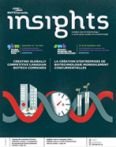Building Blocks of Biotech Success
Imagine if you purchased a premium building lot in Manhattan with the intention of constructing one of the world’s most state-of-the-art skyscrapers.


Now imagine that you have never constructed a skyscraper before. Where do you start? Could you learn how to build a skyscraper on the fly? Would you trust your investment of millions to an inexperienced construction team? Most would answer a definitive ‘no’. Instead, you would hire a general contractor and a professional team with an expertise in skyscraper construction. A team that has all the tools, resources and is familiar with the complex rules and regulations required for successful skyscraper construction.
In a sense, drug and device development is much like skyscraper construction. In the biotechnology industry, the patents and inventions behind the product is the building lot in the analogy above. Yet, many biotech companies continue to try and develop their product with inexperienced ‘construction’ teams. As a result, many new and innovative products never make it to market, not because the products are flawed, but because of a faulty development process stemming from a lack of experience, foresight and resources. There are two reasons for this.
First, the inventors and founders of biotech companies are unquestionably experts in the basic science behind their products. However, basic science is only one aspect of the large, ever-changing landscape of drug and device development. This leads biotech companies to underestimate what is required to successfully bring a drug or device to market. Drug and device development is a complex and unpredictable process that requires an expertise not just in science, but also in a vast array of areas including regulatory affairs, clinical science, project management, manufacturing, marketing and intellectual property. In essence, you need the experienced, professional ‘construction’ team to get the job done.
Secondly, many biotechnology companies have limited resources, particularly academic spinoffs, and feel that world-class drug and device expertise is only available to those who can afford it, namely large pharmaceutical companies. However, the availability of talented, development professionals to biotech is now rapidly changing.
Over the past fifteen years, larger pharmaceutical companies have gone through a significant transformation. According to Fierce Biotech, between 2000 and 2010 , there were over 1,300 industry mergers - valued at more than $691 B USD. In 2009 alone, the largest mergers (Pfizer’s acquisition of Wyeth, Merck’s acquisition of Scherring-Plough, Roche’s acquisition of Genentech) had a tremendous lasting impact on the human capital of these companies. According to a Forbes article, in the decade between 2000 and 2011, over 300,000 pharmaceutical employees, many in R&D, were laid off; these layoffs provided a unique opportunity for many biotechs. Given the post-layoff environment, many smaller biotech firms were able to tap into the vast pharmaceutical experience and talent of previously ‘taken’ employees, without significant overhead.
Now more than ever, experts in drug and device development are becoming available to the biotech industry, allowing companies to employ the best talent and succeed in bringing their products to market.
The Manhattan skyline never looked so good.




